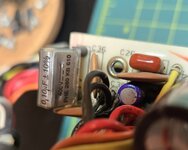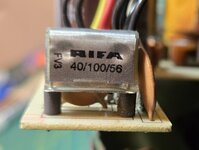Hi There,
Currently working on restoring a Macintosh II system and would need some help with identification of some RIFA caps that are on the PSU. There are three 0.1 uF caps that are of the type that like to burn up. These have not cracked yet thankfully but I don't really want to push my luck. Unfortunately there's nothing that indicates whether those are X or Y type safety caps. Haven't really been able to find any thing about them online either unfortunately. There is also a larger 0.022 uF RIFA near the transformer and that one's clearly noted as a Y cap (which has completely cracked across its entire length so glad I didn't turn the PSU on before checking). Pics of the caps in question have been attached. Appreciate any input, thanks!
Currently working on restoring a Macintosh II system and would need some help with identification of some RIFA caps that are on the PSU. There are three 0.1 uF caps that are of the type that like to burn up. These have not cracked yet thankfully but I don't really want to push my luck. Unfortunately there's nothing that indicates whether those are X or Y type safety caps. Haven't really been able to find any thing about them online either unfortunately. There is also a larger 0.022 uF RIFA near the transformer and that one's clearly noted as a Y cap (which has completely cracked across its entire length so glad I didn't turn the PSU on before checking). Pics of the caps in question have been attached. Appreciate any input, thanks!


